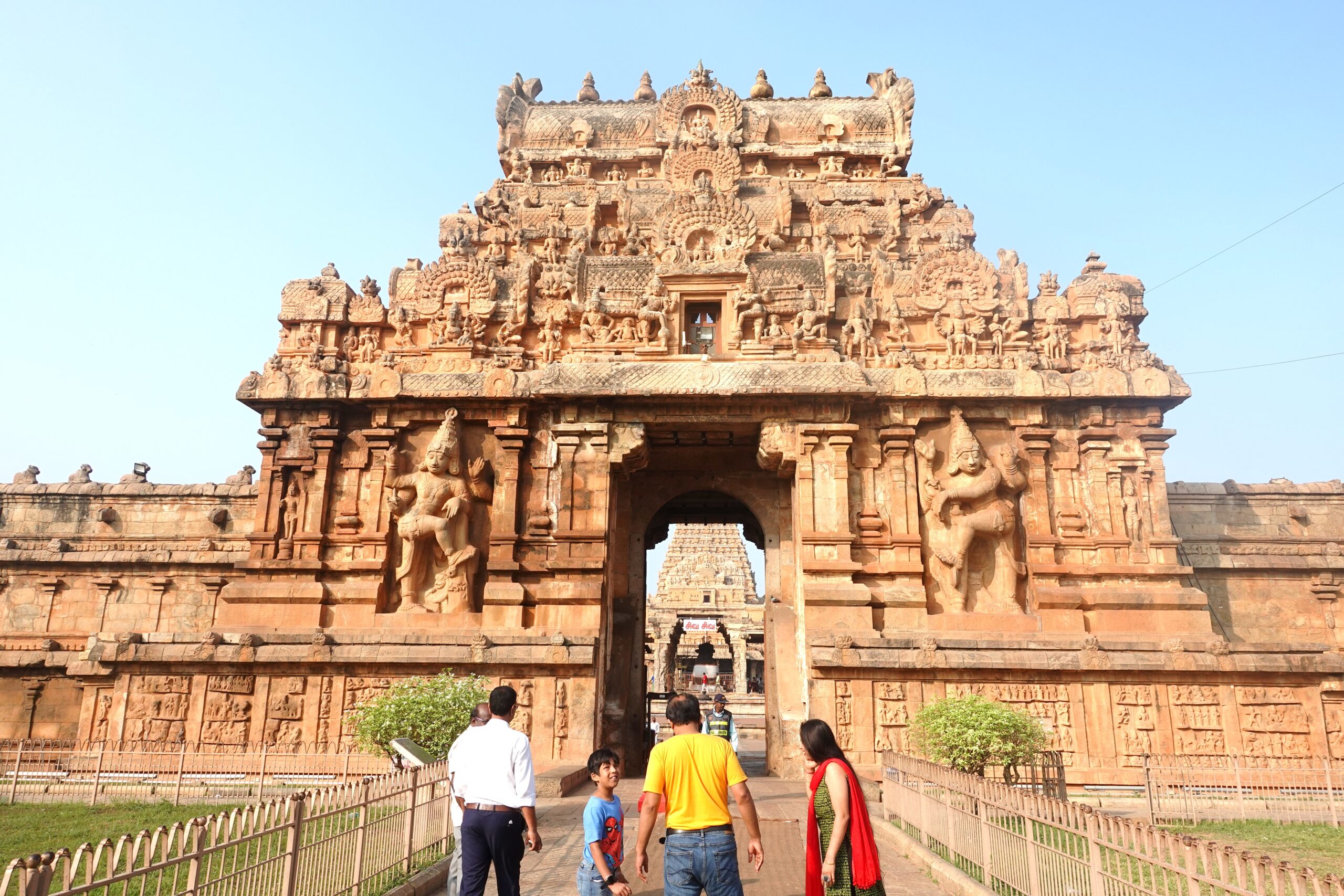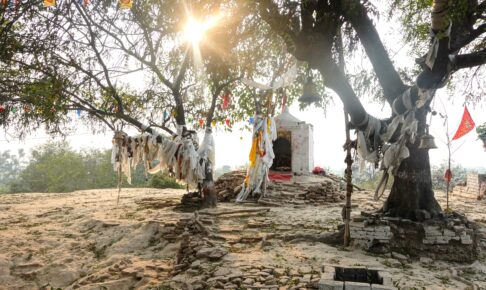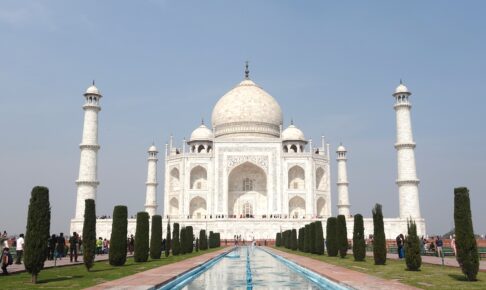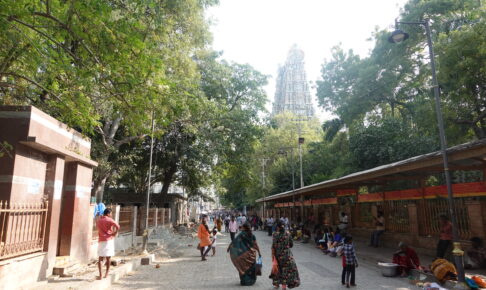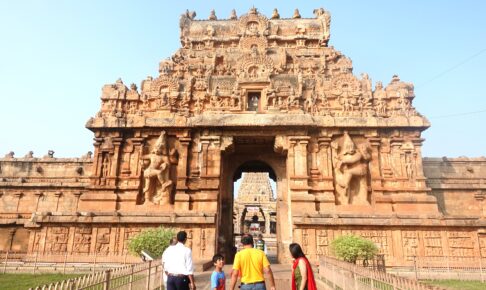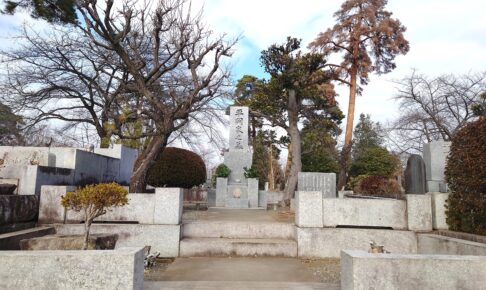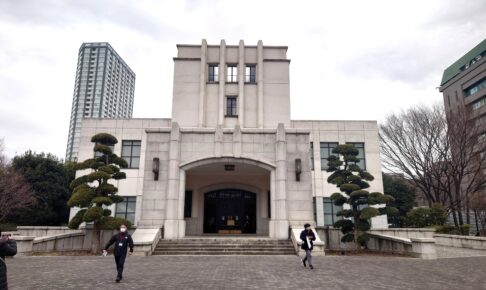Travels to Buddhist sites in India and Sri Lanka (65)
To Thanjavur, the capital of the Chola Dynasty, a great power in South India - so huge! This is Sri Lanka without a moment's hesitation!
Now, the third expedition to India is about to begin.
My first destination was the ancient capital of South India, Thanjavur.
I was here in Thanjavur to finish up the rest of my Sri Lankan Buddhist travelogue before visiting the places associated with the Buddha.
As you can see from this map, South India and Sri Lanka are just a stone's throw away.
(32) A Brief History of Sri Lanka's Colonial Period: The Historical Background to the Emergence of the Dharmapala."As we discussed in the article "The Fall of Anuradhapura," the royal capital of Sri Lanka fell to the invading Chola dynasty army from South India in the early 11th century.
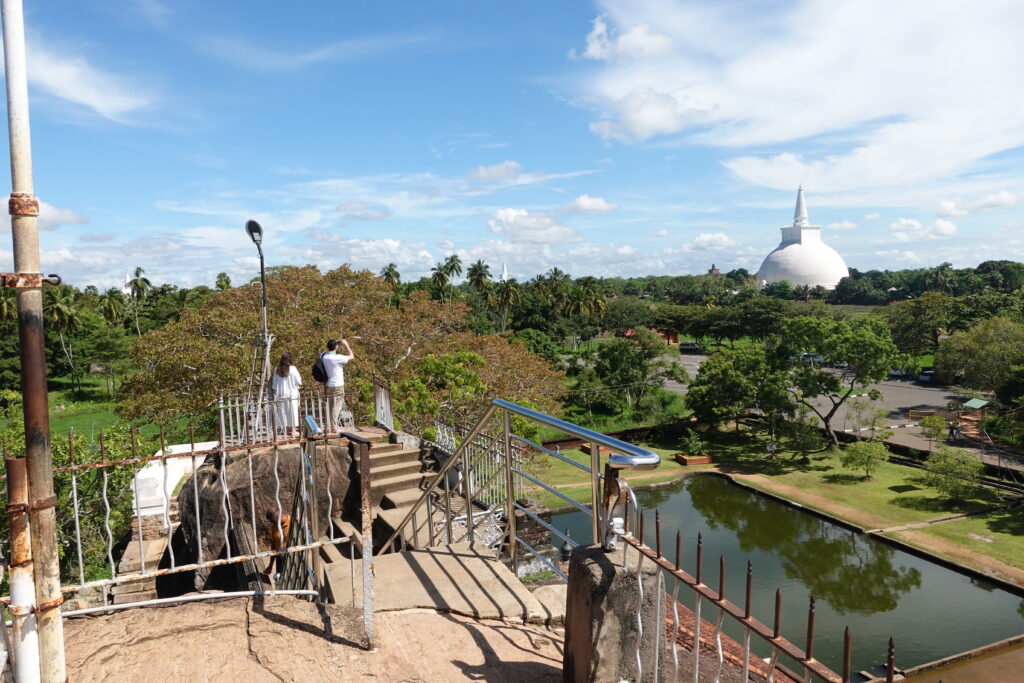
The fall of the royal capital damaged Sri Lankan Buddhism to such an extent that it became impossible for the order to continue to exist. The collapse of the royal capital was fatal to the Buddhist order, which had been established under the patronage of royal authority. The capital of the Chola dynasty, which brought about this crisis in Sri Lanka, is Thanjavur, which we will visit this time.
I was very interested in the existence of the Chola dynasty, which brought about a major turning point in Sri Lanka's history. What kind of country was the Chola Dynasty, the great power that engulfed Sri Lanka? This interest made me decide to visit the Chola Dynasty.
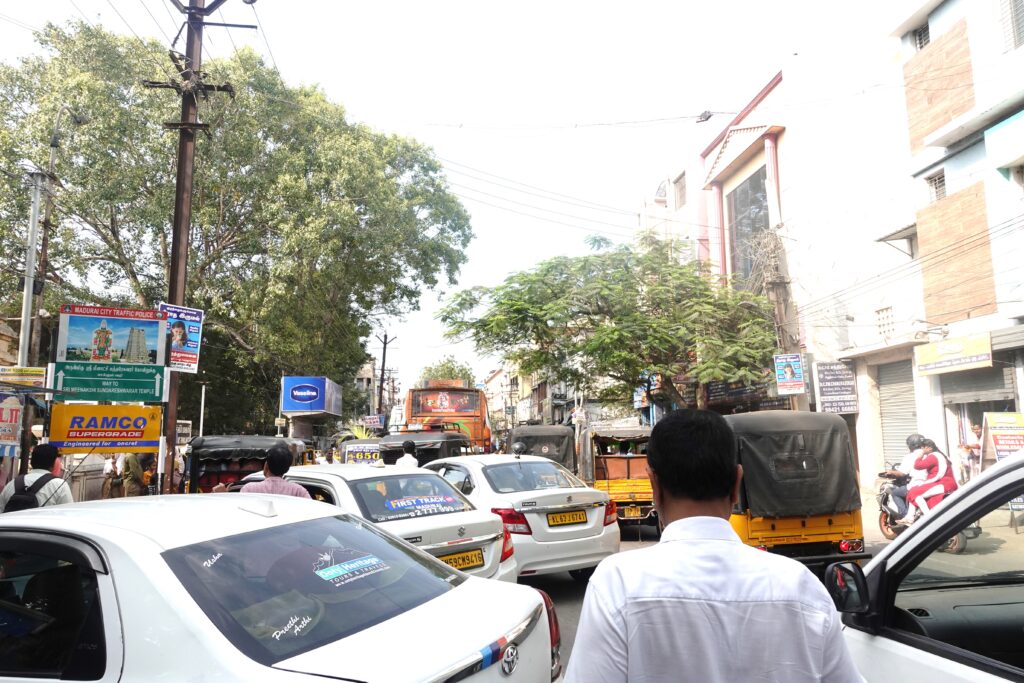
Here we are. India. Chaos as usual.
This is it. This is how India should be. The constant honking of horns makes me feel nostalgic.
Am I getting stronger? Am I getting used to India?
This hustle and bustle is so different from the calm and orderly atmosphere of Sri Lanka. They say that once you get hooked on India, you get addicted to it, and I may have finally gotten hooked on it, too. I thought so for a moment, but I was naive. After all, India is India. I felt the difference between India and Sri Lanka.
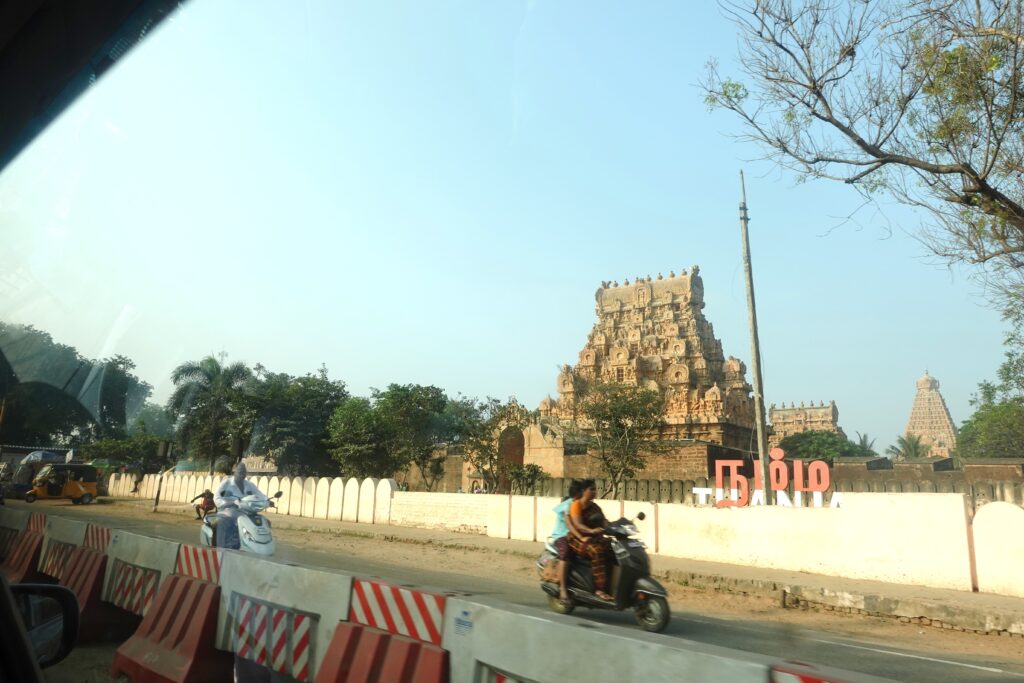
Now we have come to today's destination, the iconic Brihadishwara Temple in Thanjavur.
This is a Hindu temple built in the early 11th century, at the height of the Chola dynasty. Yes, it was built during the Chola dynasty's invasion of Sri Lanka. This is exactly what I am interested in.
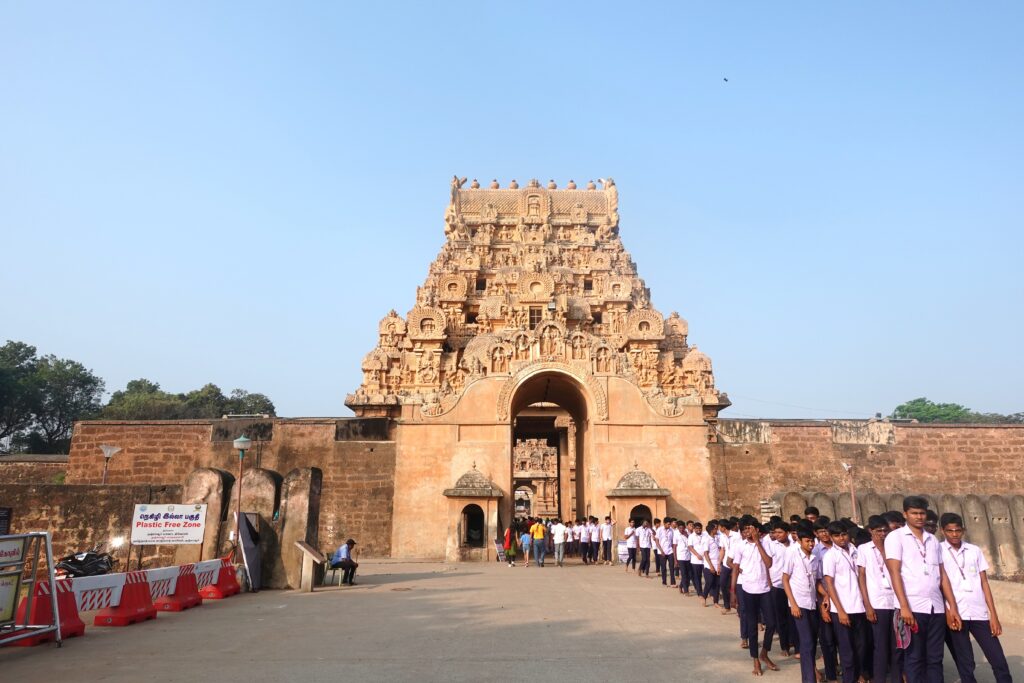
I came to the outer wall and the gate. At this point, I was astonished. This gate was huge! The real thing was much more impressive than the picture.
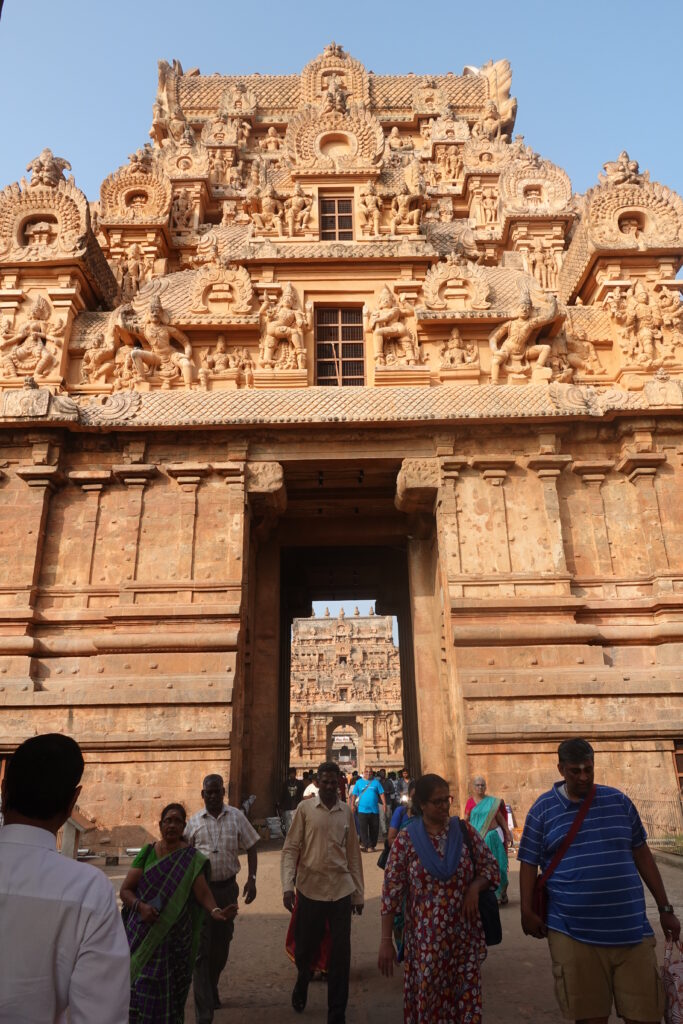
The most impressive moment was when we passed through the gate. Another huge gate appeared beyond the gate. The power of the gate looming right in front of us was so powerful that an inexpressible groan escaped my lips! I could not help but let out an inexpressible groan. This is amazing. They had built such a tremendous structure at the beginning of the 11th century. Sri Lanka would not stand a chance! If they were to be invaded by such a great power, there was nothing they could do.
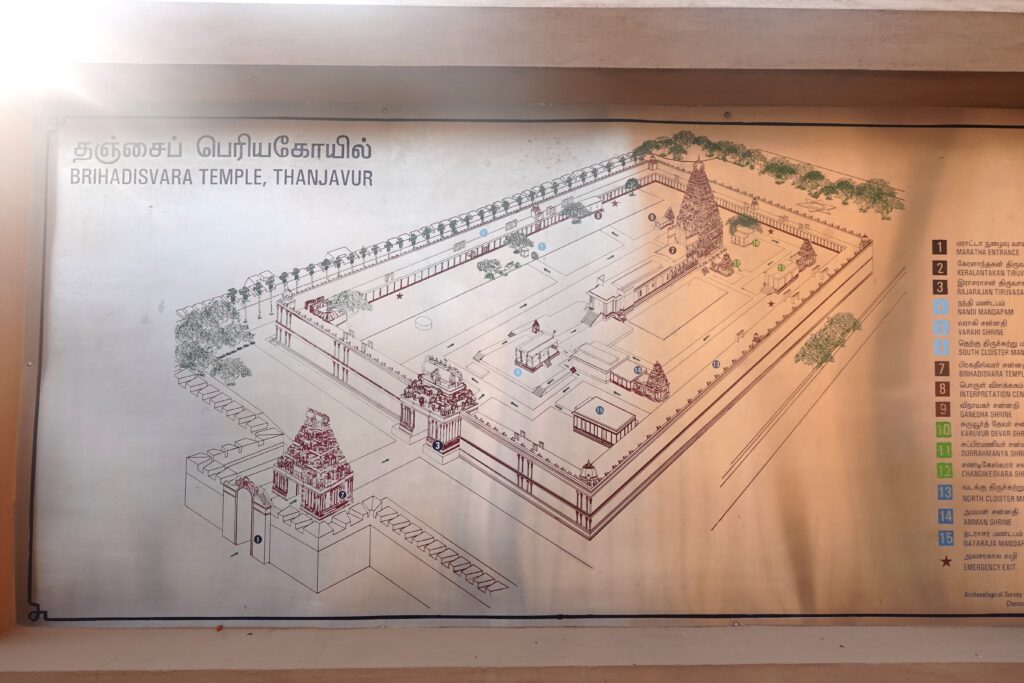
This is a map of the temple, and I am now between (1) and (2), just after entering the temple. From here, one passes through the gate that leads to the main temple grounds, and then enters the temple. It is indeed a magnificent structure.
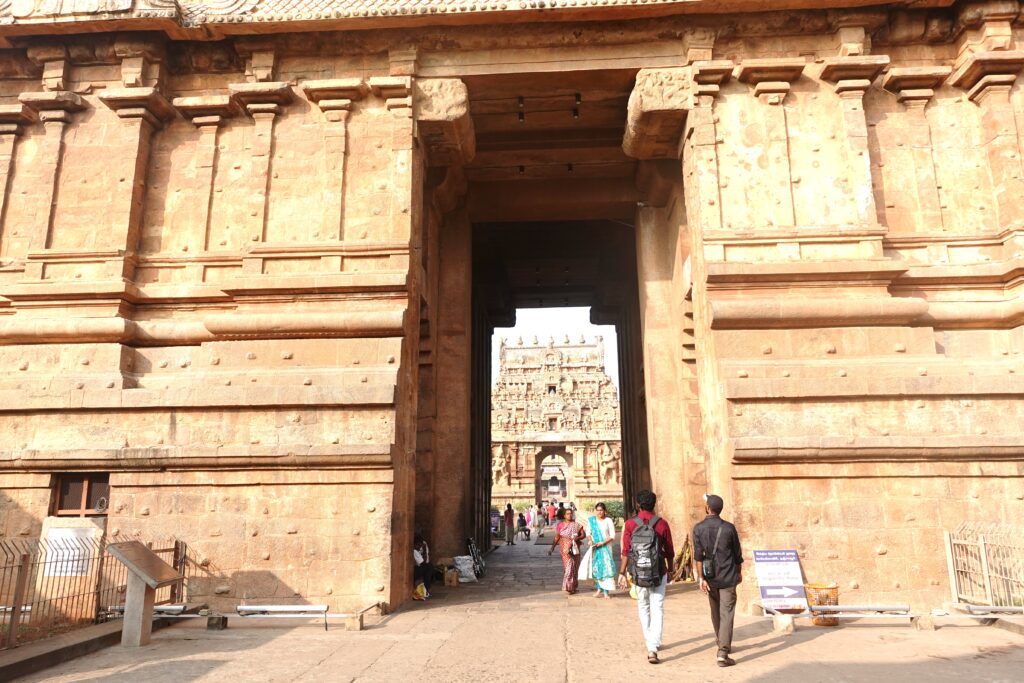
And it was wonderful to see the view beyond the gate with its exquisite composition. It was like a picture frame. He did not just create a huge structure, but he also had artistic sense. My hat is off to him.
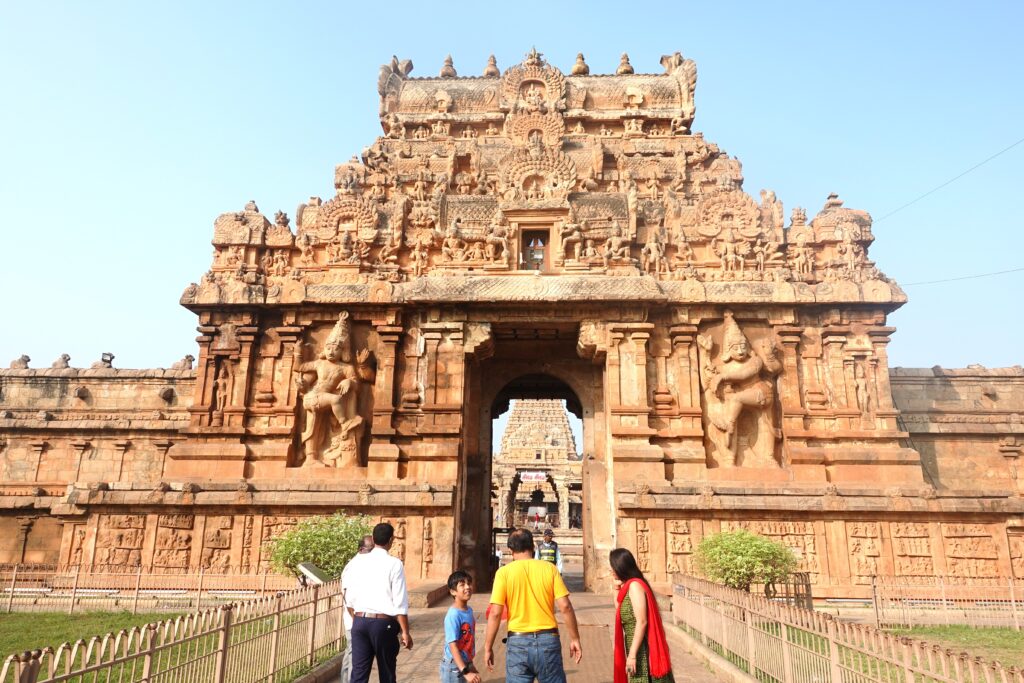
This is the gate in front of the main shrine. The sculpture of this gate is also very famous.
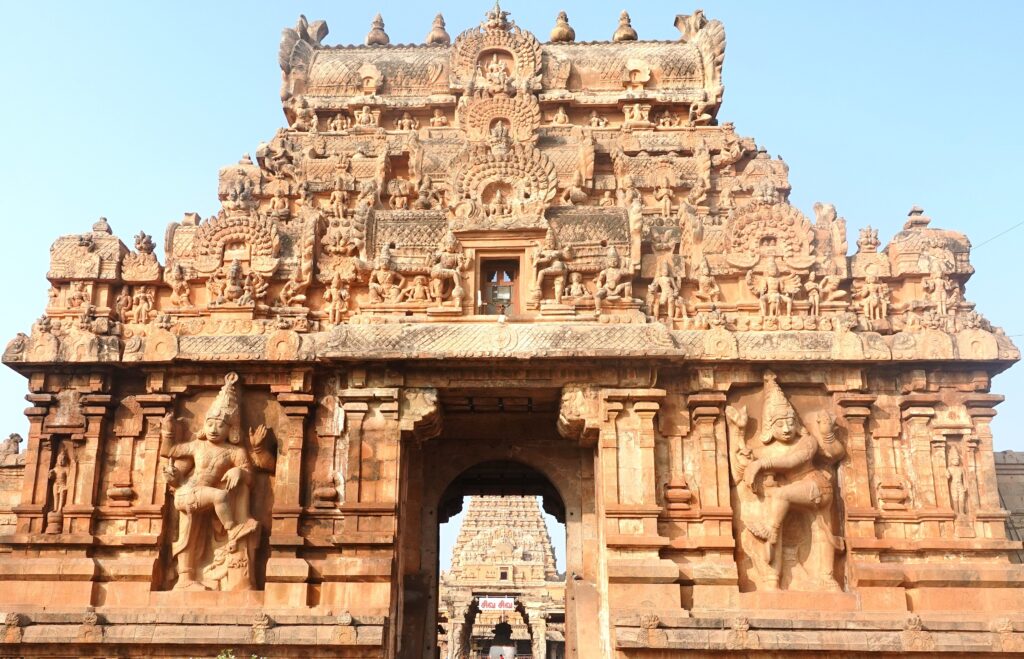
The huge statue in the lower section is the guardian deity of this temple. In Japan, they are like the Kongorikishi statues of Todaiji Temple. Please pay attention to their graceful and powerful movements. This is indeed India, a country that loves dancing. Shiva is the god of dance, and this kind of sculpture is their specialty.
The upper part of the gate is covered with fine carvings. The contrast between the upper and lower structures is truly wonderful. The lower structure, which is close to our line of sight, gives the impression of enormity and power, while the delicate upper structure is placed on top of it to soften the impression of roughness. It is a truly magnificent architecture that combines power and delicacy. I was completely overwhelmed by it. I was completely bowled over by it. The power of the Chola Dynasty was clearly demonstrated to me. I feel sorry for Sri Lanka.
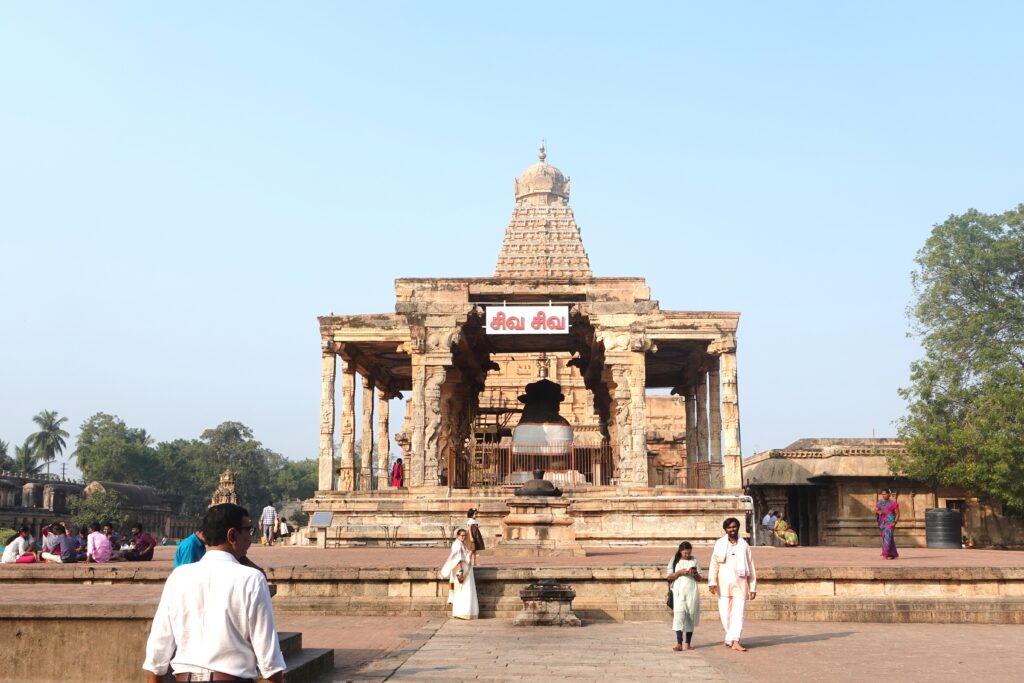
We came to the inside of the precinct. It is quite a large space. In front of the temple, there is a hall dedicated to a statue of Nandi, a cow cherished in Hinduism, and behind it rises the main hall, one of the largest in South India.
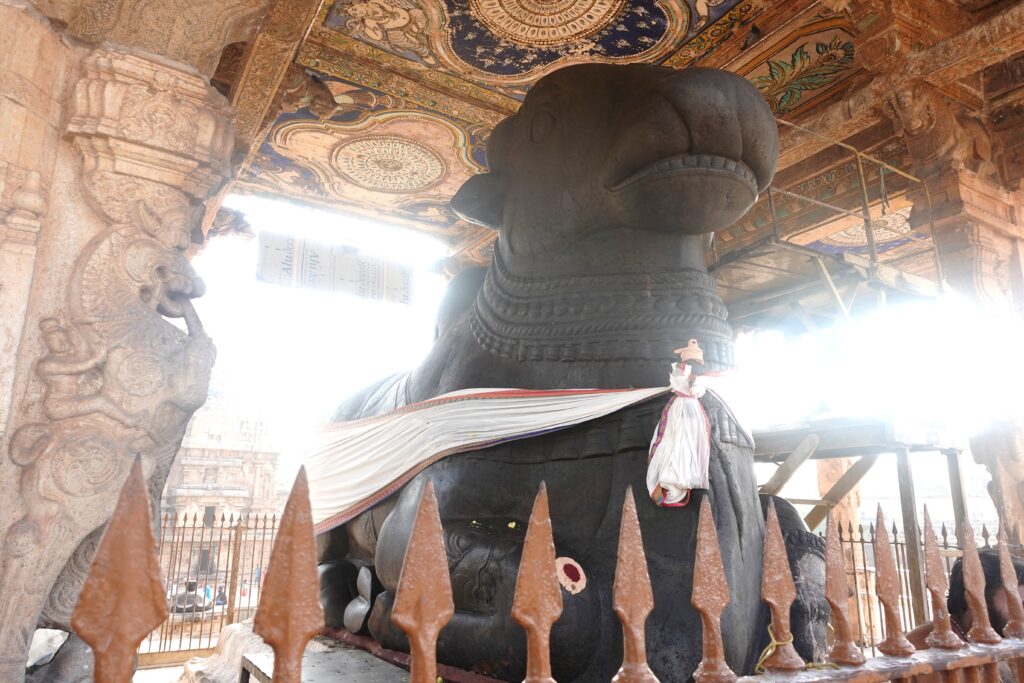
This is the statue of Nandi. The statue was dug out from a single rock.
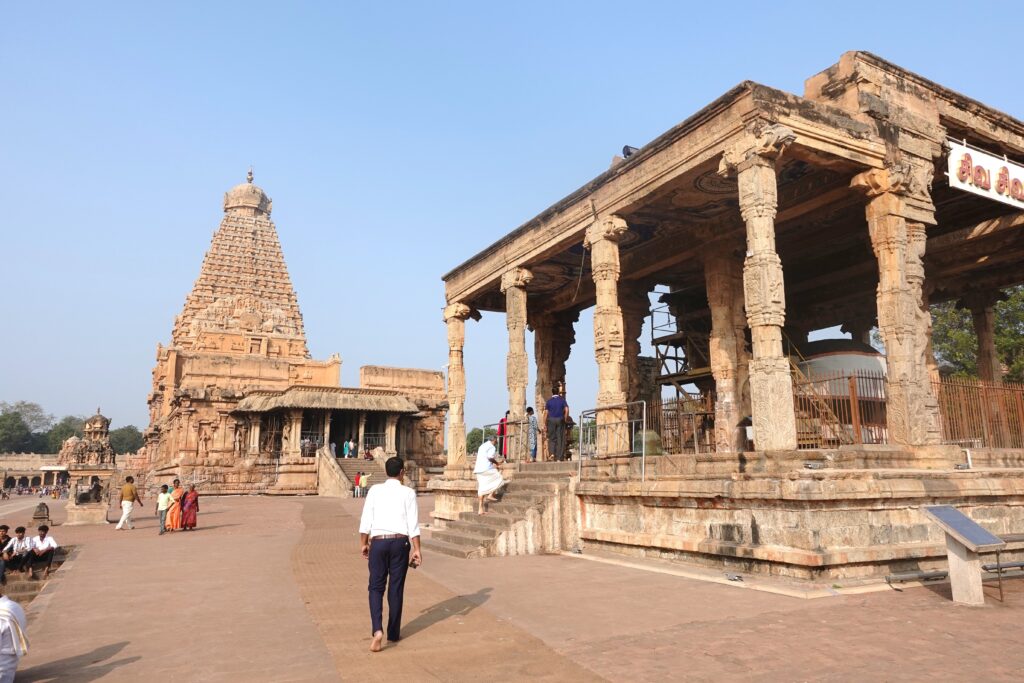
Let us now proceed to the main hall.
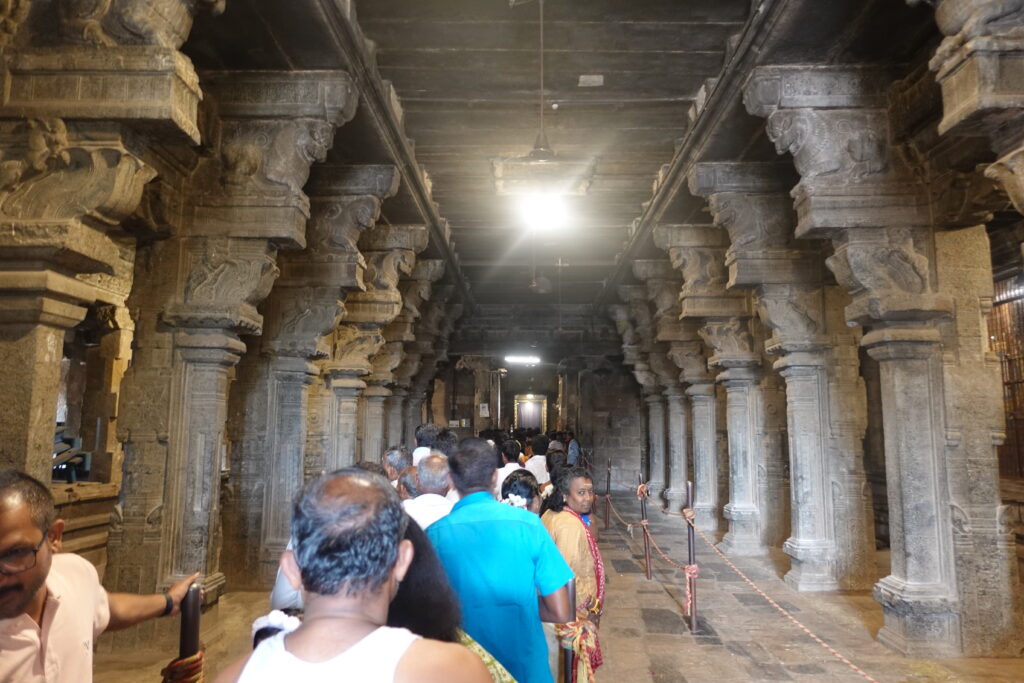
Inside the main hall made of stone. It looks like a cave. The massive pillars on both sides of the hall create a stately atmosphere.
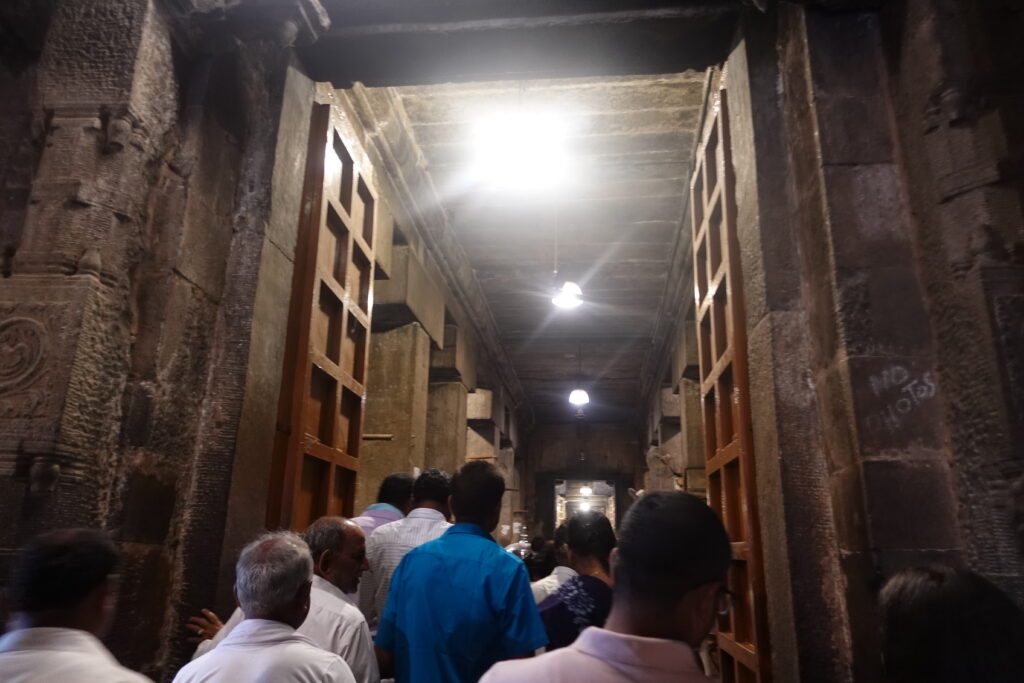
Moreover, the deeper you go, the narrower and narrower the space becomes. It is still a long way to the room where the principal image resides. It is not so easy to meet God.
Indians are moving forward and forward and forward. The sense of distance between them and humans is very close. If you open even a small space, they will twist your body.
The smell of sweat and perfume all waft through the air. And above all, you feel the heat emanating from the human being.
I was struck by their strong egos and the way they were pushing and shoving each other. Mishima was moved by this visit to India. In other words, he was an uncomfortable young man in Japan.
This will take some explaining. I made the following hypothesis during my first trip to India in August.
I think people who are into India feel uncomfortable living in Japan," he said.
The cultures of India and Japan are so different that they are almost polar opposites. Japan is an unusually well-ordered society. Moreover, there is a pathological absolutism about "reading the atmosphere. Mishima must have despaired of such a Japan. Did he feel uncomfortable?
Of course, Japan has its own advantages. But for those who do not fit in there, India can be a very liberating place to live.
With these thoughts in mind, I paid my respects to the principal image in the midst of the Indian fervor and left this main hall.
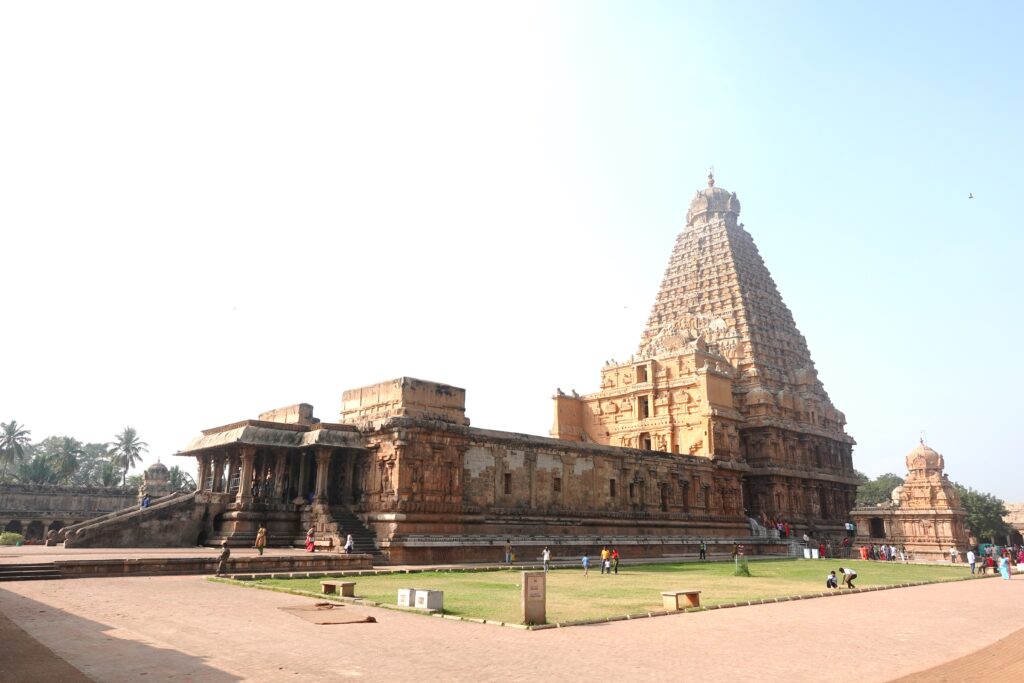
The main hall of the temple, which is 63 meters high, is said to have been more than five times taller than other temples of the time. This temple is truly a towering presence. Even today, the main hall is said to be one of the largest in India, making it an unquestionable World Heritage Site. I could understand how overwhelmingly powerful the Chola Dynasty was.
History, by the way, is interesting.
(38) Impressed by the lost ancient city of Polonnaruwa's Buddha statues! Here are the highlights of Sri Lankan sculpture!"As I mentioned in the article "The Sri Lankan Kingship Collapsed under the Chola Dynasty," it is also true that the Chola rule brought advanced technology and culture to Sri Lanka.
I felt this when I visited this area. The cultural level before and after the influence of the Chola Dynasty was completely different. This relationship between a large country and a small country reminds me of the relationship between China and Japan in the past. Buddhism in Japan also has its origins in China. We have adopted Chinese culture and mixed it with the indigenous culture of Japan to become what we are today. (The expression "advanced culture and civilization" has become difficult to use today, but I dare to use it here.)
It was a very significant experience for me to visit Thanjavur. It was a very significant visit in terms of Sri Lankan Buddhism. As I have said many times before, it would be impossible for such a large country to attack Sri Lanka. It was an experience that made me realize the magnitude of the power of this country.
*Below is an article with reference books on India and Sri Lanka that we have referenced in this travelogue. Please refer to them.
periodA list of recommended reference books to help you learn about Indian history, religion, and culture."
periodA list of recommended books for "those who want to know more about Indian Buddhism."
periodA list of recommended books to help you get to know the Buddhist country of Sri Lanka."
Next Article.
Click here to read the previous article.
Related Articles












